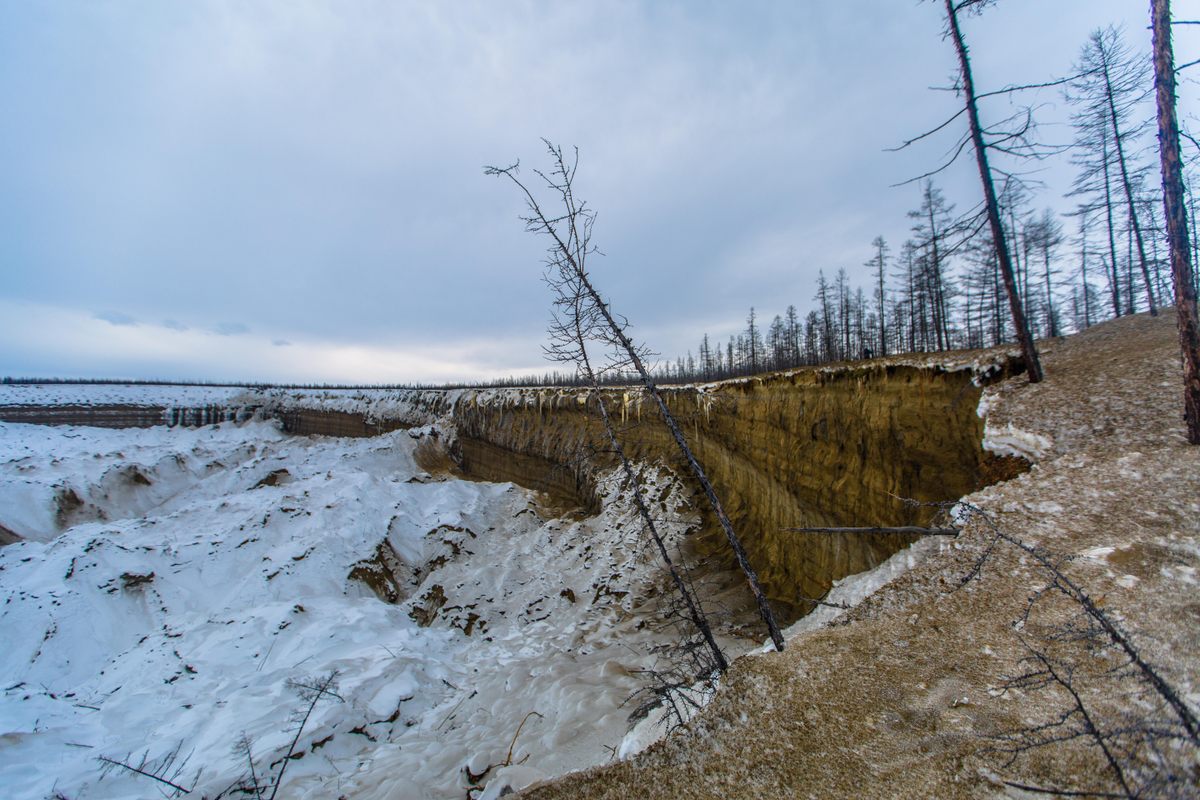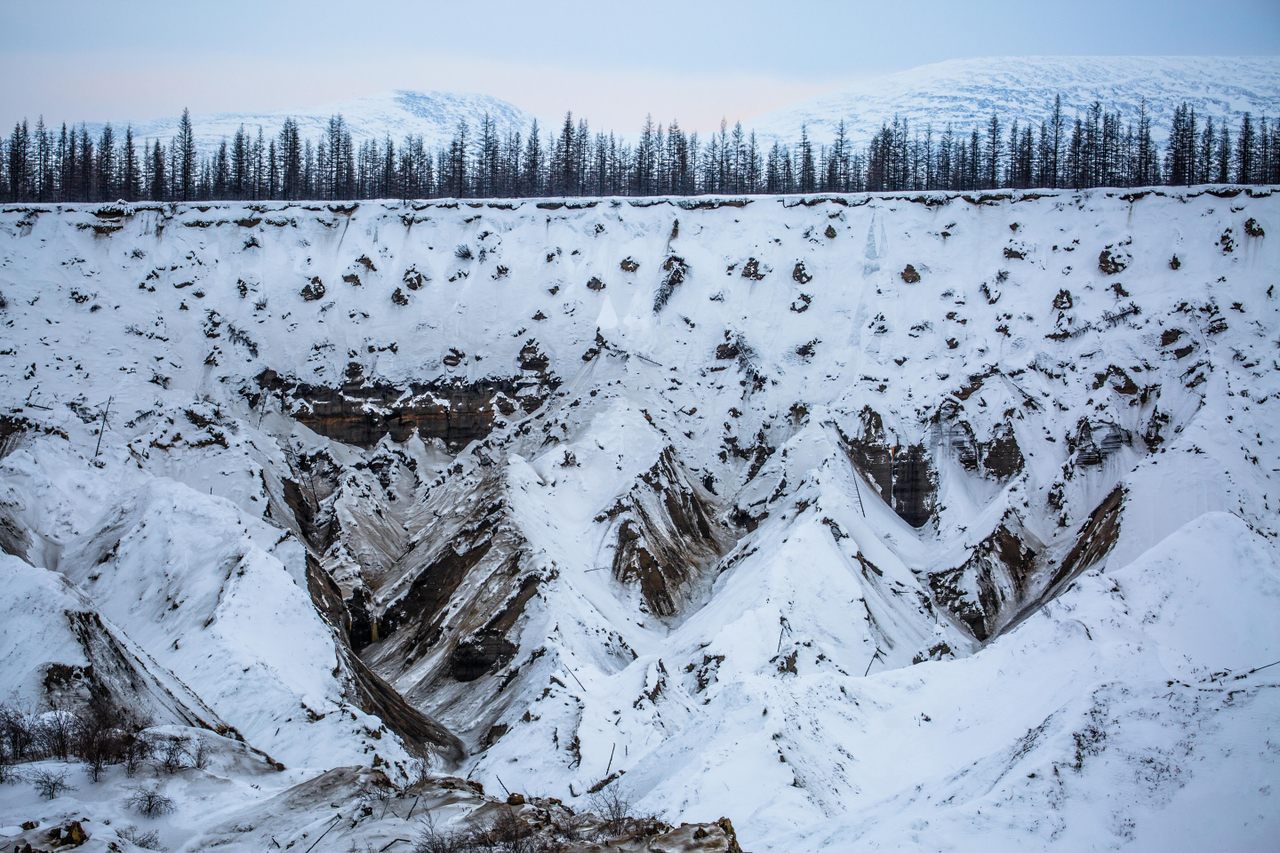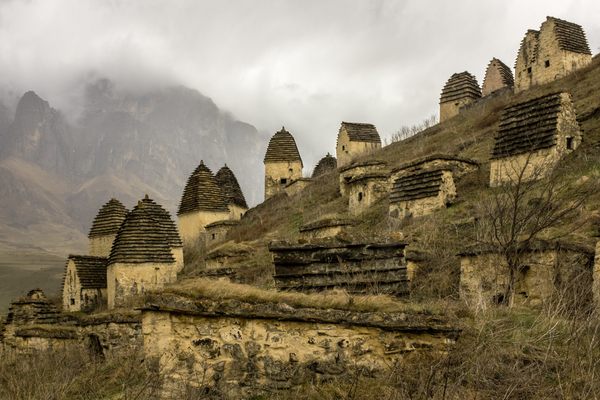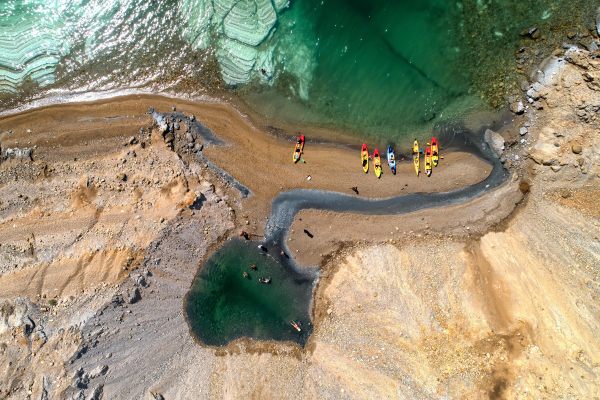Siberia’s Doorway to the Underworld Is Getting Even Bigger
Say goodbye to a million cubic meters every year.
In Siberia’s Yana Highlands, a chunk of land roughly the shape of a giant stingray has been sinking down into a very large pit. Called the Doorway to the Underworld, the Batagay Megaslump (also known as the Batagaika Crater) is 200 acres and continues to widen. Scientists have known for a while that the permafrost crater has been continually melting and growing, but the expansion is even faster than they’d realized.
In a new study, scientists were finally able to see and measure the crater’s staggering accelerated expansion. The team used satellite images to assess the growth on a 2D scale. Remote sensing and field data from lab samples completed the picture to create a 3D view of the permafrost’s melting speed. Alexander Kizyakov, from Lomonosov Moscow State University’s Department of Cryolithology and Glaciology, and a research team of 12 other scientists published their findings in the journal Geomorphology.
“In recent years, the retreat rate of the headwalls has varied from five to 15 meters [16 to 49 feet] per year,” Kizyakov says. “The volume of the bowl-shaped retrogressive thaw slump (RTS) increases by approximately 1 million cubic meters per year.”
The highest retreat rate of the megaslump’s ice and permafrost is occurring on Batagay’s south-facing slope.

“There is enough potential to expand the Batagay megaslump over the adjacent valley which will most probably be absorbed in the next decade or two,” says Nikita Tananaev, lead researcher at the Melnikov Permafrost Institute in Yakutsk, who is unaffiliated with the study.
That could mean trouble for the Batagay River, which the megaslump drains into. Tananaev and other researchers have already seen the channel pattern of the water change due to the melt, which led to an increased erosion rate on the riverbanks.
“This will lead to significant alterations to the riverine habitat, and the effect of sediment escaping the slump is even seen in the Yana River, the major river in the vicinity,” Tananaev says.
Both Tananaev and Kizyakov note that the rapidly increasing megaslump could also increase greenhouse gas emissions, since sediments and nutrients previously frozen will be released. That’s a problem, because climate change is what has caused the crater in the first place.

“As we observe the current climate over the Verkhoyansk Range, in the vicinity of Batagay megaslump, there is no surprise that the feature is growing this fast,” Tananaev says. Temperatures there are consistently above average and regularly set heat records for the area. “Higher retreat rates are expected to continue since we expect some more years with extremely high air temperature in this region to occur,” he continues.
That being said, Kizyakov and the study authors say Batagay is really only able to expand so much. There’s little room for it to grow deeper because the permafrost melt has just about reached the bedrock at the bottom. The sides, though, can keep growing, to a point.
“Only expansion along the margins and upslope is expected,” Kizyakov says. “This lateral expansion is also limited by the proximity of bedrock, the top of which apparently rises to the saddle between the nearest mountains about 550 meters uphill of the megaslump.”
Tananaev believes the rapid growth rate will eventually decrease if the weather patterns return to normal—but he also warns that the megaslump may indeed grow larger than expected.













Follow us on Twitter to get the latest on the world's hidden wonders.
Like us on Facebook to get the latest on the world's hidden wonders.
Follow us on Twitter Like us on Facebook